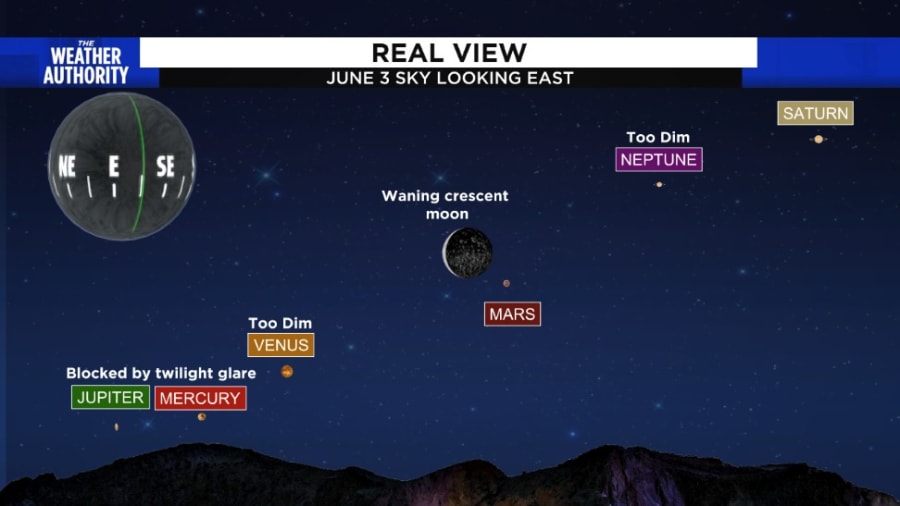Jacksonville, FL – Have you seen headlines about a spectacular “planetary parade” happening on June 3rd? Well, it isn’t all it’s cracked up to be.
While the idea of seeing multiple planets lined up in the sky sounds exciting, there’s more to the story than meets the eye. Here’s why this celestial event isn’t quite what it seems, according to NASA and astronomy experts.
Not Quite a Parade, More Like a Distant Gathering
The truth is, only Mars and Saturn will be readily visible to the naked eye on June 3, and even then, they’ll appear before dawn. Neptune and Uranus are simply too faint to see without a powerful telescope, and forget about Jupiter and Mercury – they’ll be lost in the morning twilight.

June 3rd Isn’t Unique
This planetary alignment isn’t a one-day wonder. The basic arrangement of these planets will be similar throughout the first week of June. In fact, you’ll have another chance to see them later in the summer – from late August to mid-September. This later window even offers a bonus: Jupiter joins Mars and Saturn, making for a more impressive view (weather permitting, of course).
Planetary Alignments Happen Regularly
Here’s the real kicker: seeing multiple planets above the horizon for several weeks each year is quite common. It happens twice a year – once in the pre-dawn sky and again in the evening sky about five months later. So, this “parade” isn’t exactly a rare event.
Where’d the Hype Come From?
This inflated excitement around June 3 seems to have originated from a blog post promoting a smartphone astronomy app. While apps can be great tools for skywatching, it’s important to consult reliable sources like NASA for accurate information about astronomical events.
Looking for a Better Planetary Show?
If you’re truly interested in seeing multiple planets, skip June 3 and set your sights on late June through early September. During this period, you can catch Mars, Saturn, and even Jupiter before sunrise. For an even more dazzling display, September brings Mercury into the mix for a brief window.





